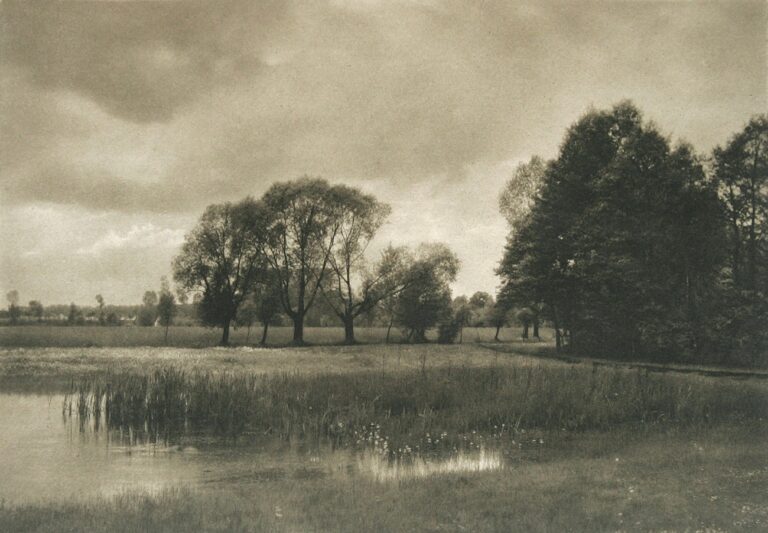
Stilleben
Printed by Meisenbach, Riffarth in Berlin in shades of brown, green and blue for the “eye” of the feather, this still life study of a human skull resting on an open book with peacock feather behind it may be an example of a photogravure printed using the Vogel-Kurtz three-color printing system:
“…Meisenbach, Riffarth & Co., having distinguished itself by the use of the Vogel-Kurtz three-colour printing system.” 1.
In Josef Maria Eder’s History of Photography, we learn that Ernst Vogel, the son of Hermann Wilhelm Vogel, “tried out different color filters and systems in Berlin and then went to New York, where he and (William) Kurtz, employing azaline plates, made the first artistic and really satisfactory three-color prints, in 1892.” “Others who worked at three- and four-color process intensively were Angerer & Göschl, Vienna; Husnik and Vilim, Prague; Meisenbach and Riffarth, Berlin, and many other men and establishments.” 2.
1. Rolf H. Krauss: Die Kunst in der Photographie, the German Camera Work
Part 1: The Publication and its Images: History of Photography, Volume 10, Number 4, October-December 1986 p. 274
2. Josef Maria Eder: History of Photography: Translated by Edward Epstean: Columbia University Press: 1945: p. 654



